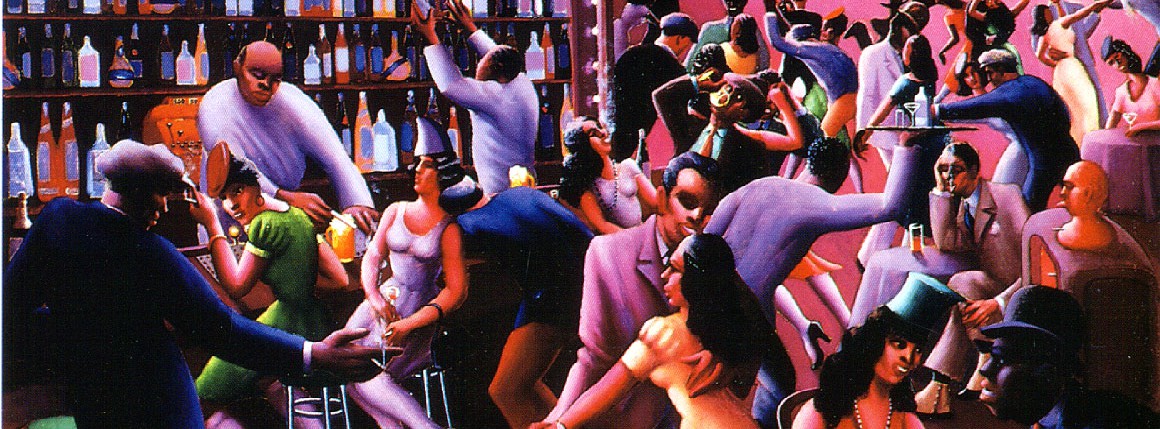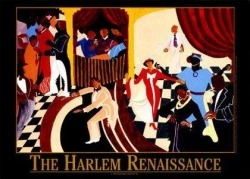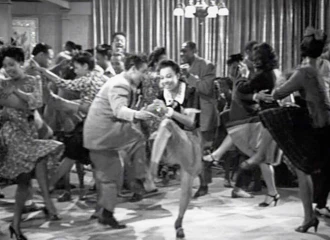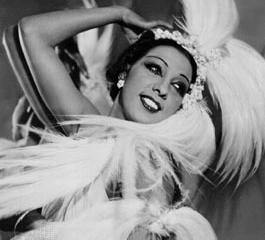The Exchange of Black Culture Through Dance:
During the Harlem Renaissance, dance was an artistic way to exchange African, Caribbean, and European cultures to create and spread the “New Negro” identity throughout the United States and Europe in the early 20th century.
During the 1920’s and 30’s, dance was described as a “flowering of artistic creativity” that inspired various innovations and periodic revivals. After the Civil War, many people from the Deep South and the Caribbean migrated into various North American cities. New York, specifically in Harlem, became home to black people from different cultural backgrounds and traditions with their own unique dances and music styles. Dancers in Harlem used different parts of the body, undulated (“to move with a smooth, wavelike motion) the spine, rotated the hips, bent their knees, fluidly extending and flexing their legs and moved on their flat feet with their torsos oriented towards the ground. New dances were created out of the cultural mixing of African Americans from different parts of the North and South, also. Because of this Harlem later became the “fountainhead” of social dances that became a craze during the twenties. As a result of this, racial agency, appropriation of cultural dances, as well as the commodification of black stereotypes became a growing social and political issue.
Clothing was a big part of the culture during the Harlem Renaissance. One way people liked to show off their wealth at the time, was to show it off in their clothes. The upper-class wore elegant and classy outfits which usually consisted of a skirt, blouse, and a hat. The upper-class wore even nicer clothes at night. The celebrities wore the outfits that the upper-class wore at night; the celebrities just wore them everywhere. The middle class had the same style as the upper-class, but had less amounts of nice clothes so they would attend fewer fancy events. The lower-class wore more ragged clothes, which usually consisted of hand-me-downs from the middle-class. The flappers had a very distinct style. The flappers wore beaded dresses and dark black eyeshadow. Lastly, the musicians/performers wore clothes like shimmery dresses so light would reflect well on them. Clothing was a way to show-off a person’s higher position in society during the Harlem Renaissance.
Many participants of the Harlem Renaissance valued art for its service to civil rights, whereas others believed that artistic freedom was the most important civil right. The different dances performed in Harlem during a period of intellectual fervor helped influence African-American writers who were trying to capture the lives of citizens in rural areas and inner cities. Dances originated by black people permeated established forms and influenced the emerging repertoire of jazz dance and dance in both theater and film. New dances were created out of the cultural mixings of African Americans from the North and South. As a result of this, racial agency, appropriation of cultural dances, and the commodification of black stereotypes became a growing social and political issue.
The Harlem Renaissance opened a window for the African American dance heritage, which originated from cultures of many different African groups. During the time of slavery, African Americans had not only been enslaved personally but also culturally because of how Ethnic groups, clans, and families were often broken up, and as a result, African dances specific to these families disappeared and were transformed in the new world.
(Disclaimer: The information gathered was analyzed by Tahlyah Ellis, Kyra Morgan, and Courteney Celestin. The group explored why dance was an essential part of the Harlem Renaissance, its impact, its influences, etc. We split up the work equally. Tahlyah wrote about Florence Mills, Buddy Bradley, Katherine Dunham, Pearl Primus, the introduction to dancing, notes on Savoy Ballroom, and added information to the dances such as its origins and how it evolved. Courtney worked on the “about” the Harlem Renaissance, Alice Barker, Bill “Bojangles” Robinson, Josephine Baker, and The Cotton Club. Kyra wrote about the four dances: The Charleston, The Cakewalk, The Shimmy, and The Lindy Hop. Kyra also wrote about the clothing and fashion of the time, and took the overview and put it into paragraph form. Courtney and Kyra worked on the annotated bibliography for the online sources. Tahlyah did the annotated bibliography for the books. All of us gathered media (pictures and videos) for the site. We all helped edit everyone’s work; adding things, and converting the notes to paragraph form.





